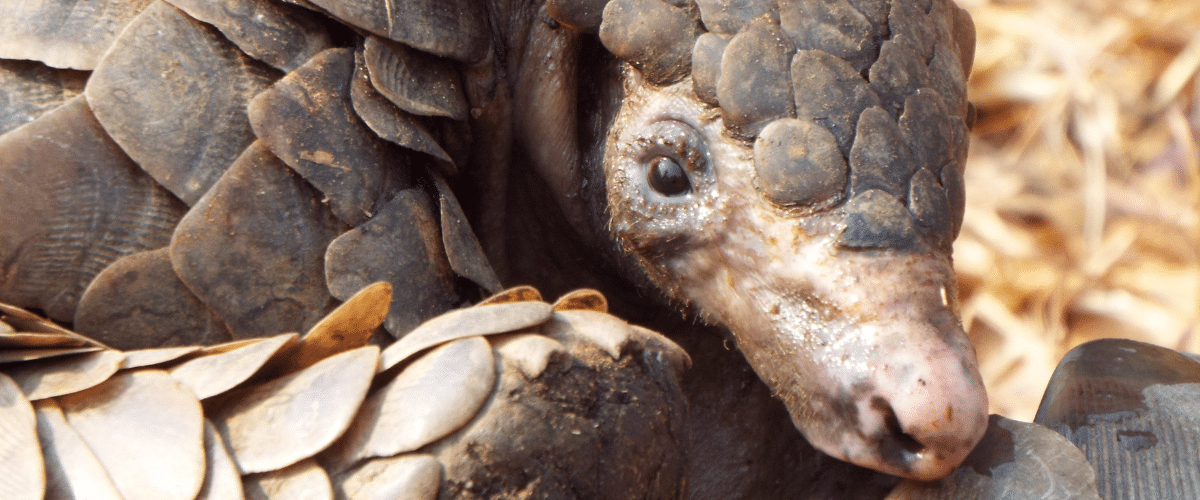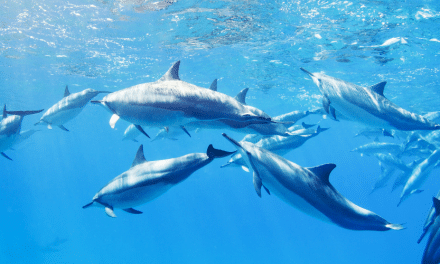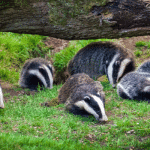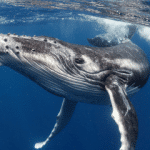By Sophie Lunn, student at Nottingham Trent University
Covid-19, the human illness caused by the novel virus SARS-COV-2, has been causing worry and disruption since it first emerged. Attention immediately turned to its origin: where did this new virus come from? Despite all the efforts made in China to contain the virus, it has become a pandemic. Cases have been confirmed in more than 110 countries, and the number of lives lost to the virus continues to rise. The economic toll is likely to run into trillions of US dollars.
The first cases of infection appear to trace back to a ‘wet market’ in the Wuhan province of China. The market in question sold for food a variety of wild and domestic animals, some still alive. Such markets have been temporarily banned in China as a direct result of the appearance of Covid-19. It is widely suspected that the virus originated in a wild animal in the market, then spread to humans, perhaps via infection of an intermediate wild or domestic species. This has prompted debate around the ethical and welfare implications of ‘live food’ markets, as well as the risks to animal and human health. Could Covid-19 turn out to be the saviour of wildlife and bring to an end the wildlife trade once and for all?
Conspiracy theories have spread along with the virus; however, the origin of the virus has been researched thoroughly by experts. Although scientists can not yet confirm the origins with total certainty, the prevalent view is that the virus began within the bat species Rhinolophus affinis at the market. The strain discovered in Rhinolophus affinis has a 96% similarity to the human strain of the SARS-COV2 virus. Studies have shown, however, that the virus could not bind to humans. This suggests that an optimised spike protein would need to be present in order to bind it to a human’s ace2 receptor. This has not been found within studies of bat species to date. It therefore seems likely that a ‘bridge species’was needed.
Malayan pangolins (manis javanica), which are imported illegally to China, exhibit a strain of coronavirus that shows similarities to SARS-COV-2 (but it is less similar than the one discovered in Rhinolophus affinis). The strain present within pangolins does encompass the binding proteins to potentially create a zoonotic virus. Furthermore, if the bat species and pangolins were kept within close proximity to each other in the wet markets, the potential for the mutation of the two differing coronavirus strains is significant.
Prior to the outbreak of Covid-19, species of wildlife have been prioritised for protection based on their conservation status and the impact they have on biodiversity. All species of pangolin are currently protected due to their status as an Appendix 1 species under CITES (Convention on International Trade in Endangered Species). Consequently, trade in the species is prohibited; however, a considerable volume of illegal trading in pangolins continues, to meet demand for pangolin meat and products for human consumption mainly within traditional Chinese medicine (TCM). It is estimated that around 2.7 million pangolins a year are poached, despite the global ban on the trade.
Finding ways to effectively enforce law and policy is essential in regulating the wildlife trade. A study published in 2016 by Cheng et al exposed significant discrepancies between illegal trade reported and the real numbers.
The wildlife protection law of the People’s Republic of China was amended in 2018. Since these amendments, illegal hunting and killing of rare and endangered wildlife under special state protection can lead to a prison sentence of up to 10 years, along with fines and confiscation of property. For this to provide a suitable deterrent, however, actual sentences must reflect the seriousness of illegal wildlife trading. Pangolin scales sell for up to $3,000 USD per kilogram; the potential rewards of illegal wildlife trading are thus vast. Yet since the legislative amendments, the volume of illegal wildlife trading in China has continued to rise. It appears the sentences meted out do not match the severity of the crime.
Many wildlife species used in TCM have been proven to have no benefit to human health, but the use of such wildlife in TCM continues within China and elsewhere. Education could play a highly significant role in reducing volumes of illegal trading in wildlife by reducing demand for certain animal derivatives.
Other options previously considered for reducing trade specifically of wild-caught pangolins have included the introduction of pangolin farming. Due to the low success rate of breeding and survival of captive populations of pangolin, however, this was proven to be unprofitable, and its introduction could have negative effects by promoting demand for pangolin products, and thus fuelling the illegal trade.
The problem is not an absence of legislation. A large amount of law and policy on illegal trading in wildlife exists worldwide. China’s amended wildlife protection law and the newly introduced ban on consumption of wildlife in some Chinese provinces should in theory make it very difficult for the wildlife trade to continue, except perhaps ‘underground’ in small volumes. Yet the illicit wildlife trade is still highly profitable and takes place openly in wet markets and elsewhere. Therefore, what it needed is the political will, and the associated resources, to enforce the laws that already exist.
In the longer term, one recommended approach would be better public education to lower desire and demand for the products of the illegal wildlife trade. The Covid-19 epidemic is a significant platform for governments around the world to improve and increase education concerning the ineffectiveness of of certain wild animal products as well as the risks to human health presented by them and live food markets in general. Public education efforts should be underpinned by more funding for research into human use of such products to clearly uncover potential dangers. The current pandemic, with the massive damage it has wrought across the world, presents a unique opportunity to take these actions. Taking them would benefit the future of wildlife conservation, global law enforcement, and human health. The opportunity must not be wasted.
Sources:
- Gorbalenya, A. et al. Biorxiv https://doi. Org/10.1101/2020.02.07.937862 (2020).
- The Conversation, 2020. Covid-19 ou la pandémie d’une biodiversité maltraitée. [online] https://theconversation.com/covid-19-ou-la-pandemie-dune-biodiversite-maltraitee-134712. Accessed 28/03/2020.
- Covid-19 Info, 2020. Covid-19 Conspiracy Theories. [online] https://covid19truth.com/covid-19-conspiracy-theories/ accessed 28/03/2020.
- Zhou, P. et al. Nature https://doi.org/10.1038/s41586-020-2012-7 (2020).
- Zhang, T., Wu, Q. & Zhang, Z. Biorxiv https://doi. Org/10.1101/2020.02.19.950253 (2020).
- Wu, F. et al. Nature https://doi.org/10.1038/s41586-020-2008-3 (2020).
- Tang, Karisa N.; Buoscio, Dana; Langan, Jennifer, et al.Echocardiographic Parameters in African White-Bellied Pangolins (Phataginus Tricuspis) Without Cardiac Disease. Journal of Zoo and Wildlife Medicine (2019).
- Sodhi, N.S., Koh, L.P., Brook, B.W. & Ng, P.K. (2004). Southeast Asian Biodiversity: An Impending Disaster. Trends Ecol. Evol., 19, 654?660.
- Conciatore, J (2019) African Wildlife Foundation. Pangolin. [online] https://www.awf.org/blog/27-million-pangolins-are-poached-every-year-scales-and-meat accessed 23/03/2020.
- Oldfield, S. (2014). The Trade in Wildlife: Regulation for Conservation. Earthscan Publications, Abingdon.
- Cheng, W. et al. (2016) Recent Pangolin Seizures in China Reveal Priority Areas for Intervention. Conservation letters., 10, 757-764.
- Devonshire-Ellis, C., 2020 china briefing, What do China’s Wildlife Protection Laws Say about Pangolins? [online] https://www.china-briefing.com/news/covid-19-carriers-chinas-wildlife-protection-laws-pangolins/ accessed 28/03/2020.
- Bayin, et al. (2009) Promoting Effects of Chinese Pangolin and Wild Pink Medicines on the Mammary Glands of Immature Mice. Journal of Veterinary Medical Science. 71 1325-1330.
- Challender et al., (2019) Evaluating the Feasibility of Pangolin Farming and its Potential Conservation Impact. Global Ecology and Conservation.
- Meyer, A. (2012) Rhino’s have no medicine. [online] https://www.rhinosinfo.com/rhino-horn-as-medicine.html accessed 28/03/2020.


















